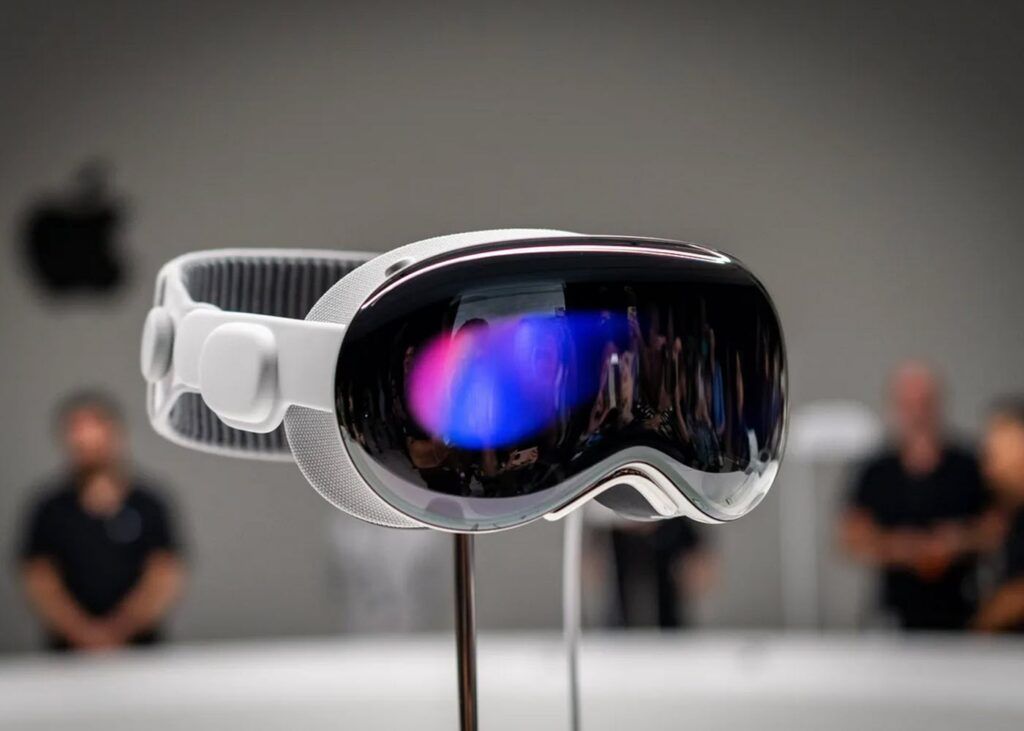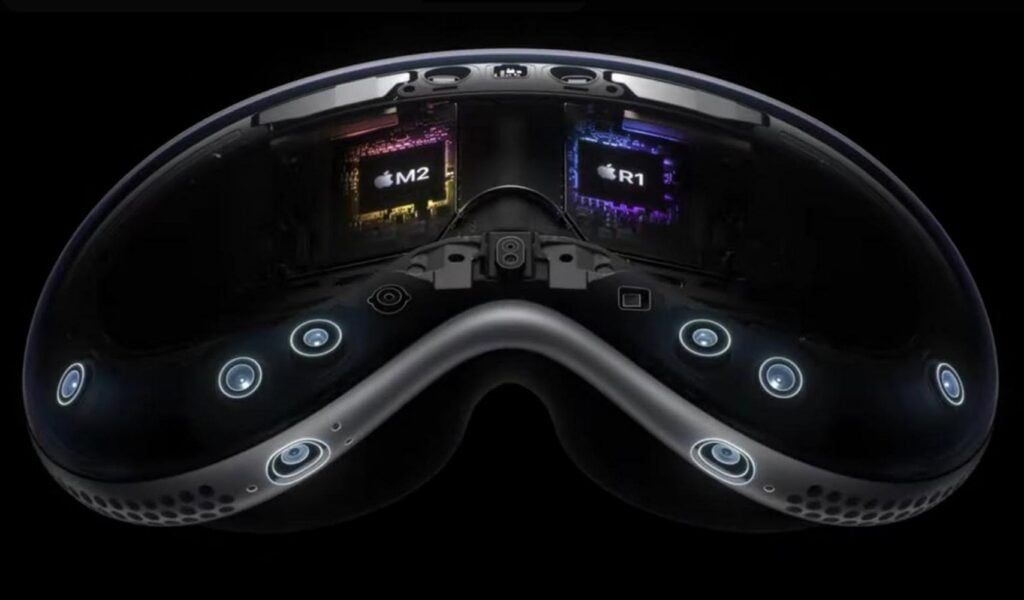Apple finally unveiled the Vision Pro, a high-end augmented reality (AR) headset that “seamlessly” blends the real and digital world. The device, which looks like a pair of ski goggles, will not be affordable to the mass market starting at UGX 13 million ($3,500) before taxes and launches early next year. This will give developers ample time to adjust their existing apps for this new platform or make new experiences.
Here are some of the key features of the Apple Vision Pro:
- High-resolution display: The Vision Pro features a high-resolution 4k display that can project 3D images into the real world. This allows you to interact with digital content in a way that is more natural and immersive than ever before.
- Built-in camera system: The Vision Pro has a built-in camera system that can track your movements and create a digital avatar of you. This allows you to interact with apps and games in a more personalized way.
- Voice-activated assistant: The Vision Pro has a voice-activated assistant that can help you control the headset and interact with apps. This allows you to use the headset hands-free, which is especially helpful when you are in a virtual environment.
- Long battery life: The Vision Pro has a battery life of up to two hours, which is more than enough time to enjoy a long session of gaming or entertainment.
- VisionOS: Apple has developed a new Operating System (OS) for its AR device from the ground up. At launch, it will be able to run iOS and iPad apps, but will also have its own marketplace where all compatible apps will be downloaded.

Based on what Apple has been able to show off, the new device is a dramatically better-looking device than any other AR or VR headset we’ve seen. The actual headset is comparatively quite thin, and most of the device’s heft and size are from the fabric shield around it and the big, plushy band around the back. The goggles are slightly curved and should wrap around most faces fairly nicely. If you use prescription lenses, Apple is also working with third-party companies to make custom lenses for you from Zeiss. The whole thing is a nice silvery color, down to the cable coming out the left side and the iPhone-sized battery pack at the bottom that provides two hours of battery life.
The headset has several innovative features, including:
- Passthrough video: This allows you to see the real world in full color, but you can also project 3D objects into real space.
- Spatial audio: This creates the illusion of different audio sources, making it seem like people are talking to you from different directions.
- EyeSight: This displays your eyes so that people can see you even when you’re in full VR.
- Digital persona: This creates a hyperrealistic avatar of you by scanning your face.
Vision Pro is a significant step forward for augmented reality. It’s the first high-end headset from a major tech company, and it has the potential to revolutionize the way we interact with technology. The system uses an M2 Apple silicon, but it also includes a new chip called the R1 in charge of real-time processing.

The Competition
Vision Pro’s primary competitor will likely be Meta, which has enjoyed relative success with its games-focused Quest 2 headset. Meta is also working on a more general-purpose headset called the Quest Pro, but it’s unclear when that will launch.
Other companies that are developing augmented reality headsets include Microsoft, Google, and Sony. However, none of these headsets have the same level of polish or features as Vision Pro.
Vision Pro is a major milestone for augmented reality. It’s the first high-end headset from a major tech company, and it has the potential to revolutionize the way we interact with technology. If Vision Pro is successful, it could spur other companies to develop their own augmented reality headsets, leading to a new wave of innovation in this space.
The headset has been in the works for years and has reportedly gone through several iterations, but at over UGX 13 million price tag, is it worth it?

